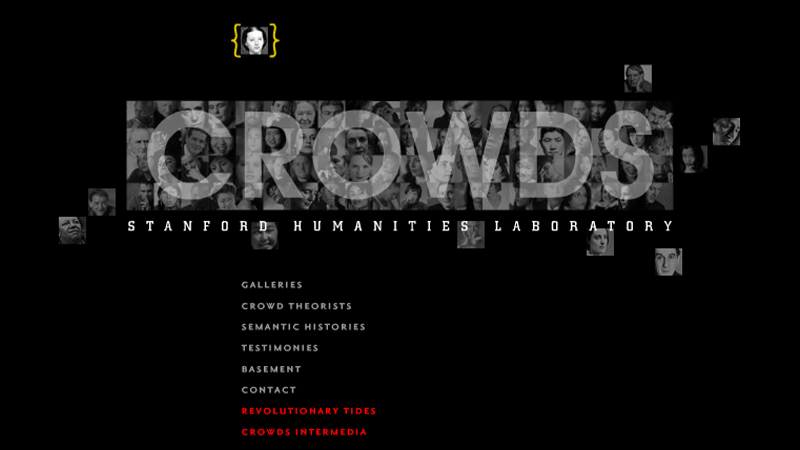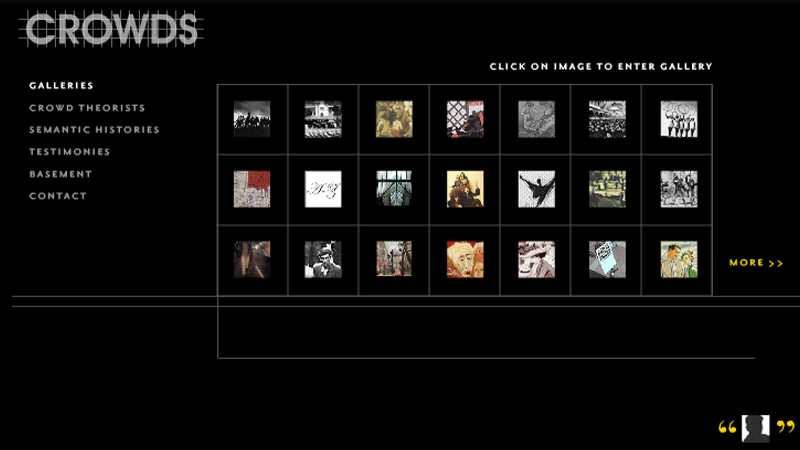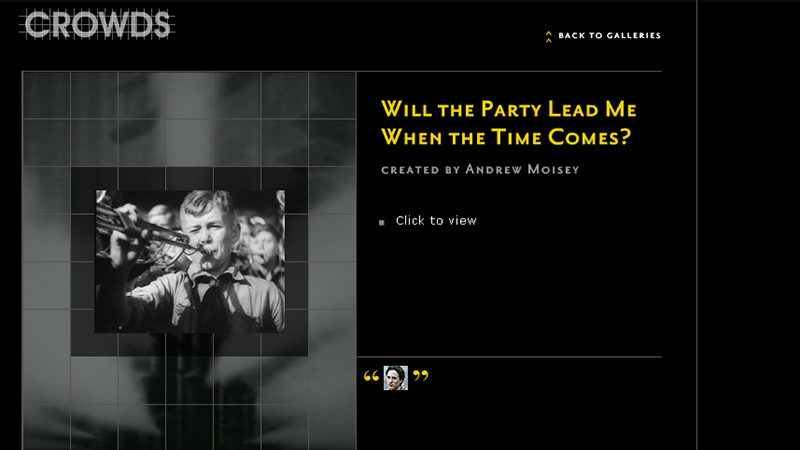"Crowds" was "[u]ndertaken as a multi-year research project of the Stanford Humanities Lab [and] productively considers . . . the crowd as a powerful cultural, political, and historical phenomenon. The site brings together an extensive database of writings, images, sound files, videos, and other artifacts in order to query whether or not, following Gustave Le Bon, we still live in 'the era of crowds.' Across the many points of view offered in the site (and in the ancillary materials that form the larger project), Crowds allows us to slice through various takes on how such public gatherings emerge and, more importantly, on how they function.
The project also explores the degree to which crowds evince a tension between the one and the many, the individual and the mass. In one of the site's 'testimonies', Michael Hardt distinguishes the multitude from the crowd, noting that 'the concept of the multitude is meant to name a set of singularities,' while the crowd often slips into the faceless mob or mass. In its very structure, in its lines and grids, Crowds draws upon this notion of singularity within unity, creating a rich, multi-perspectival investigation of public gatherings that at once respects the macro and the micro, the one and the many. Its bits and pieces, its individual players (from the furrowed brow of that marcher from Selma to the catty commentary of Jessica Burnstein), remain distinct even while they collectively paint a larger picture. The project stages an intermedial and transdisciplinary approach to its subject matter that simultaneously functions as a model of expanded scholarship, translating the work of the academy for broader public consumption, both on the internet and in various museum settings. Finally, in its invitation to curate a new gallery or add a new testimony, Crowds also creates a possible space for public dialogue, inviting someone to tell the stories of the anti-immigration protests that are unfolding as I type." – Vectors Journal Editorial Staff
1 COPY IN THE NEXT
Published in 2006 by Vectors in Volume 2, Issue 1.
This copy was given to the Electronic Literature Lab by Erik Loyer in November of 2021.
PUBLICATION TYPE
Online Journal
COPY MEDIA FORMAT
Web


